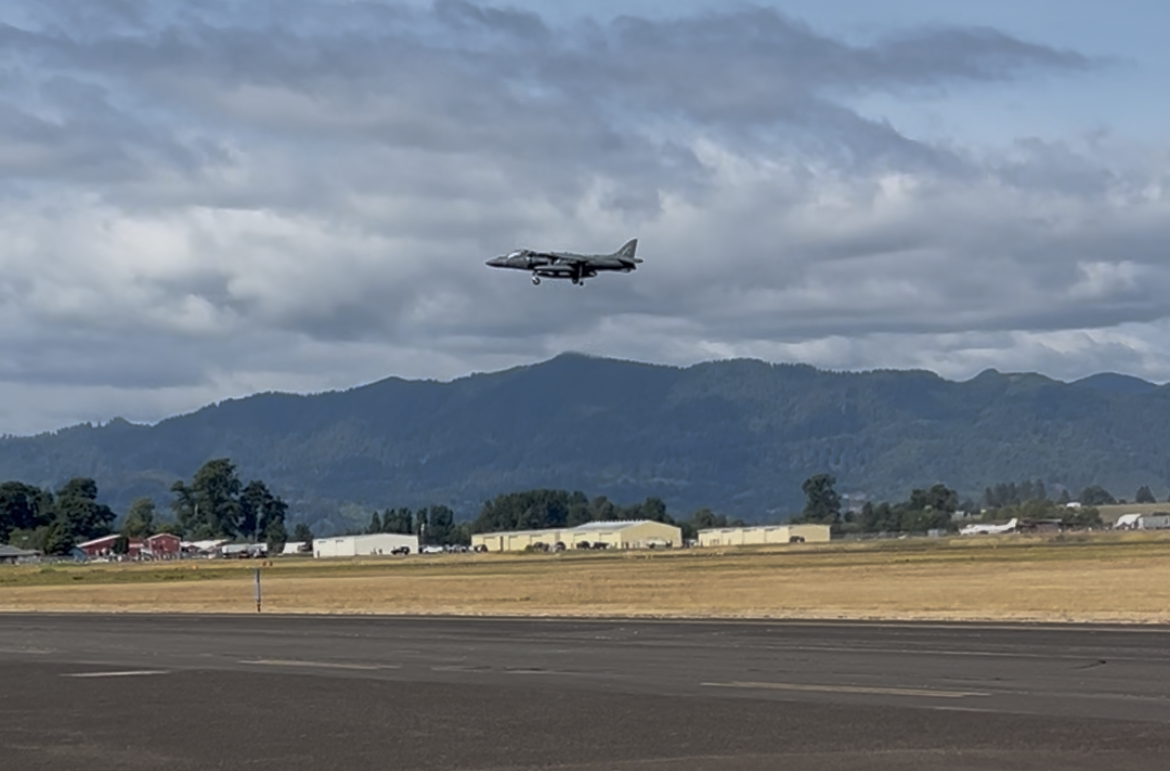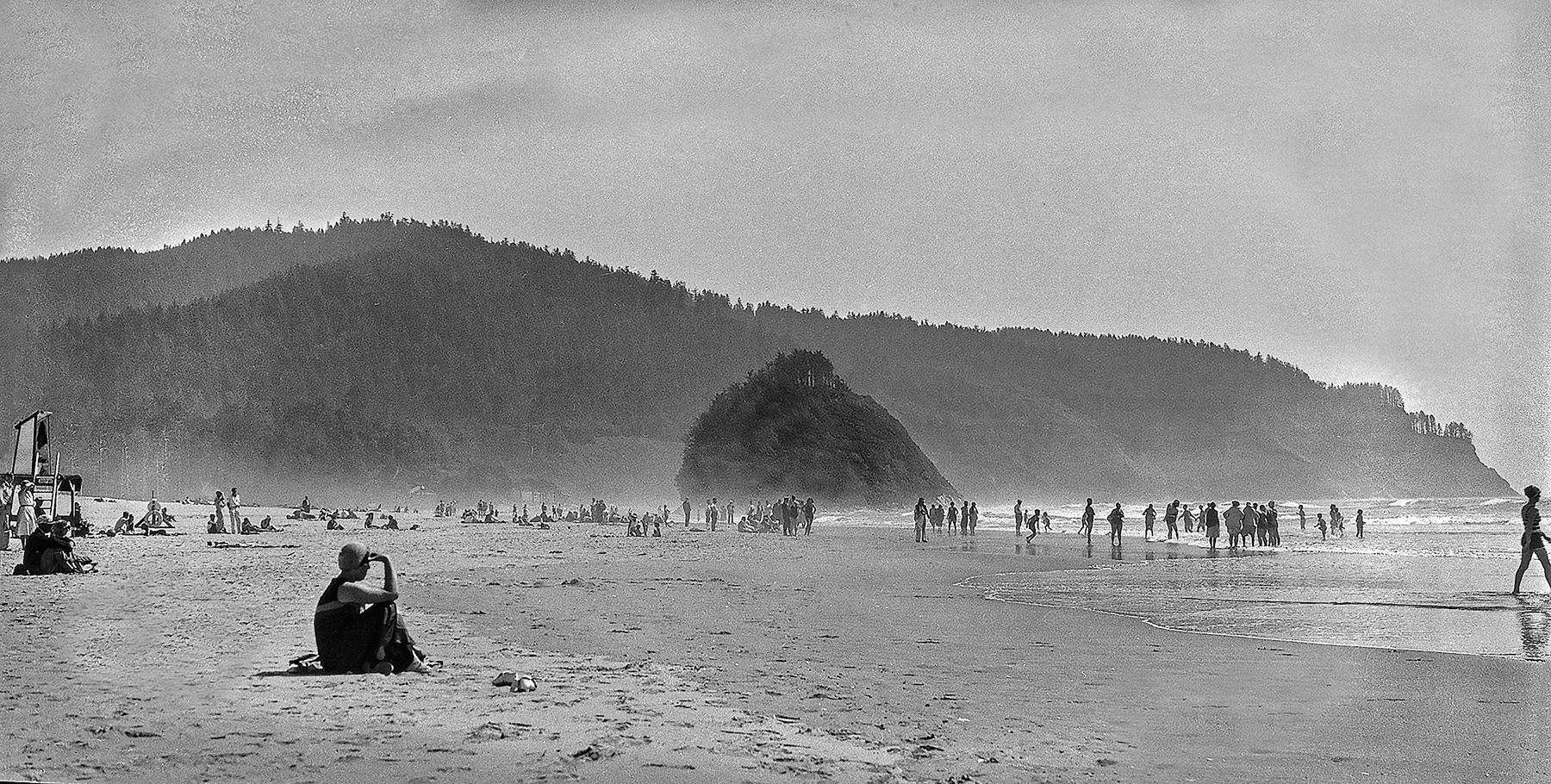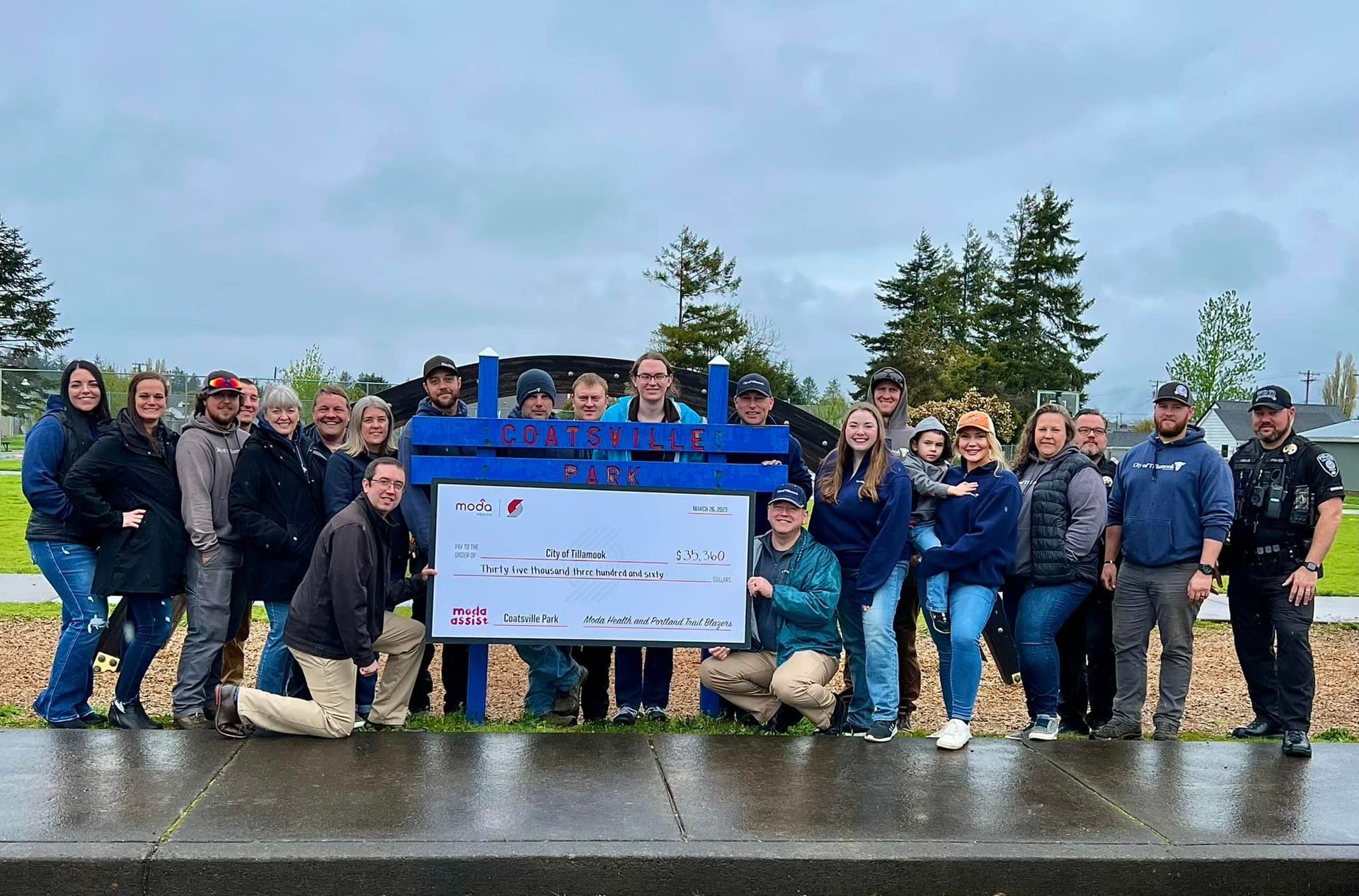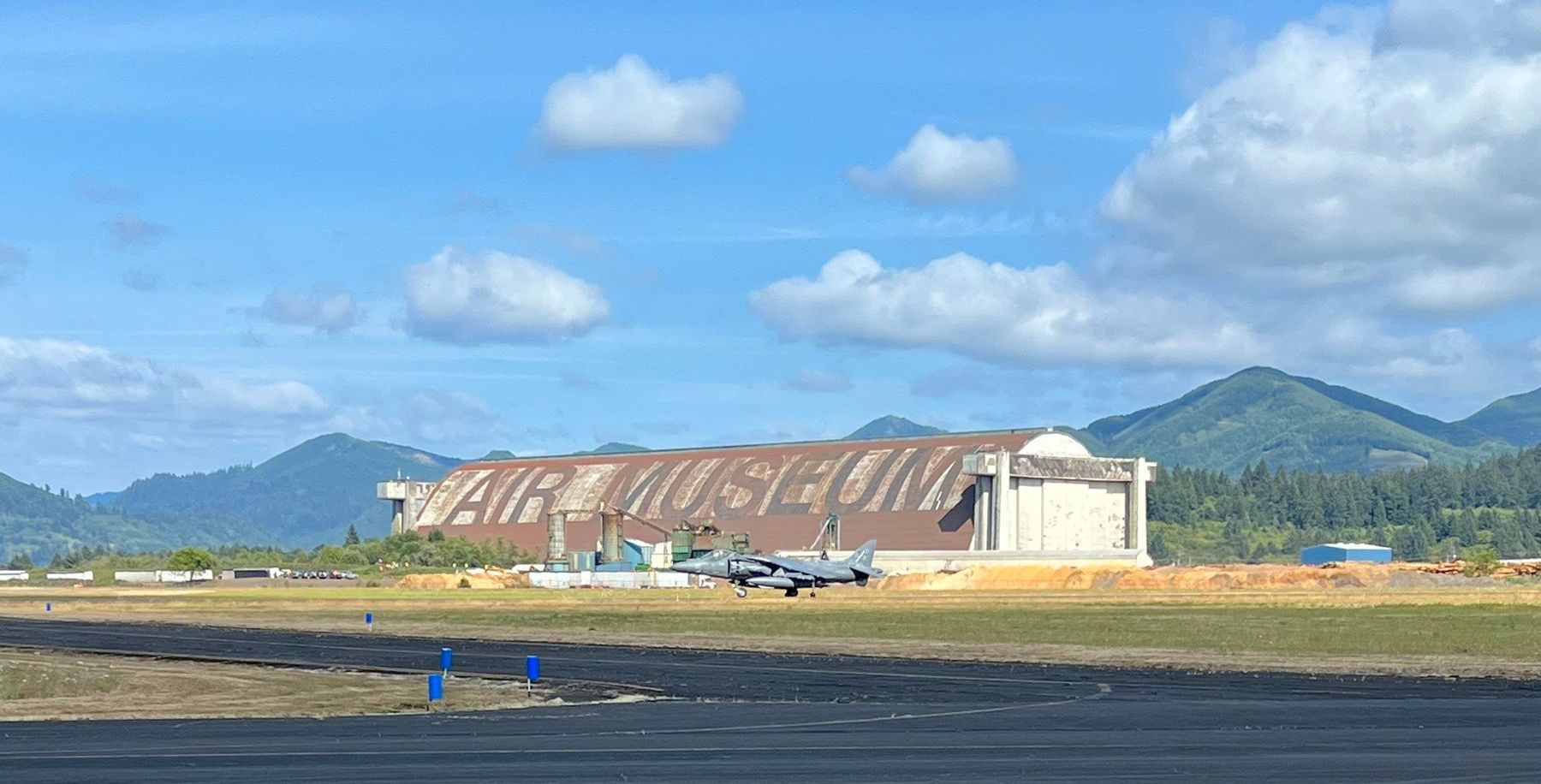Cars parked in just about every available spot surrounding the Tillamook Airport on Aug. 4. Peoples’ eyes scanned the sky for a much anticipated site: the arrival of a combat-tested AV-8B Harrier II.
Most heard it before they saw it. The Harrier arrived under its own power: a rare moment that allowed the public a unique opportunity to witness military aviation history in motion. The jet’s capabilities were demonstrated to the gathered crowds: a tour through the skies of Tillamook County, takeoff and landing, and (most impressive) a hover maneuver.
The Harrier will become a part of the Tillamook Air Museum’s collection as a long-term loan by the National Naval Aviation Museum.
“This aircraft represents an extraordinary chapter in modern military aviation,” said Christian Gurling, Museum Curator. “We are proud to accept this historic piece of Marine Corps history. Acquisitions such as this are fast positioning the Tillamook Air Museum as a world-class destination for aviation heritage, as we continue to broaden and enhance the scope of our exhibits. We look forward to interpreting its legacy for the public in a way that honors its service and the people who flew it.”

Originally delivered to the United States Marine Corps on March 30, 1995, the Harrier has logged 5,518 total flight hours, including 631 combat hours flown across 88 missions, and completed 5,457 landings. It saw combat in multiple theaters over a 30 year career, including missions during Operation Inherent Resolve in Iraq and Syria, where it flew from both USS Boxer and forward air bases such as Al Udeid Air Base in Qatar. It also supported humanitarian and combat operations from the USS Peleliu, USS Nassau, and USS America, including roles in Bosnia-Herzegovina, Albania, and the Arabian Gulf. In one deployment, its unit provided aerial support following the collision of the USS John S. McCain near Singapore.
“We are honored to welcome this distinguished aircraft to Tillamook,” said Rita Welch, Museum Director of the Tillamook Air Museum. “The arrival of a combat-tested Harrier flown directly from China Lake is a momentous occasion and one of the most significant acquisitions in the museum’s history. This aircraft greatly enhances our collection and strengthens our ability to educate the public about military aviation.”











